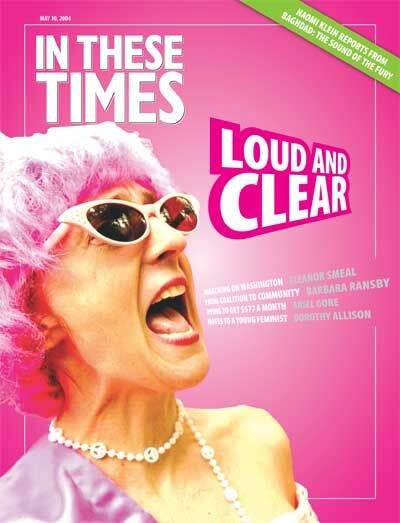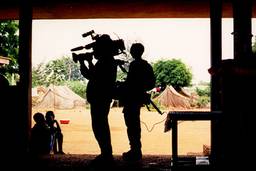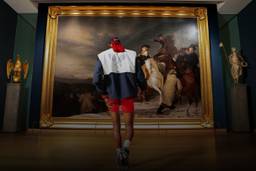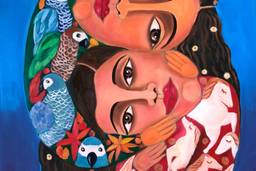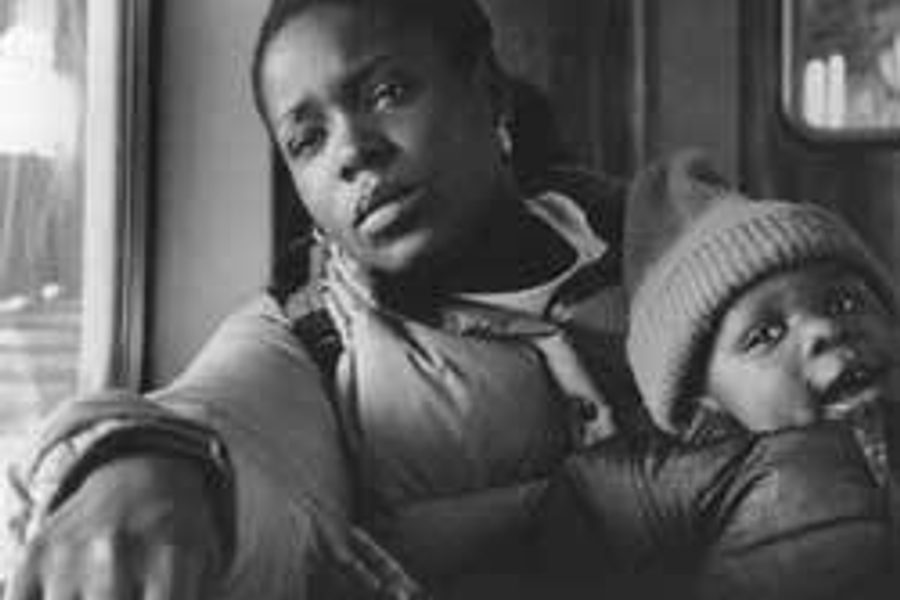
There’s a lot of story in Love and Diane, a frank, unaffected look inside one battered African-American family. It’s heartbreaking, inspiring and all true.
Diane Hazzard was one of those statistics in the crack epidemic of the ’80s, and she took her children down with her. Now, after years of her rehab and their foster care, her children are back. But following a few rosy days, the hard times begin, kicked off by her daughter Love. Love is 18, HIV-positive and the new mother of Donyaeh. She is crazy in love with Donyaeh, angry about her years in foster care and depressed about her future.
Will the tragedies of Diane’s generation be visited upon Donyaeh’s? That’s the question that drives Love and Diane, which will be shown April 21 (but check local public TV listings) on the public TV documentary series “P.O.V.” Director Jennifer Dworkin spent nearly a decade following the story.
Diane gets help from the government, including an apartment, training and a job. Of course, today’s help doesn’t necessarily fix the injuries that linger on into the present from the past. Even worse, it can sometimes create new problems. For example, when Love gets violent one day, Diane calls social services to get help for her. Instead, Donyaeh is whisked away to foster care, where his social service lawyer is AWOL. Still, Love and Diane has some happy endings, even though we know that on the way to them more scars will accumulate.
The film is compelling and defined by its complex themes. The most powerful is the bond between mother and daughter. Love and Diane scrap constantly, but they never give up on each other — and their relationship strikes a chord with people of all skin colors, classes and regions. For the story to resonate, all you need is to have a mother and to have been hurt.
This family is vastly imperfect, yet it is essential to everyone in it. Family-based solutions except in the direst situations — like Diane’s abandonment of her children in the ’80s — seem the best of an imperfect lot. The damage done by neglect and abandonment echoes through a lifetime, we see. At the same time, good faith moves mountains.
Who’s responsible for the renaissance of this troubled family? Diane is an indomitable character who’s internalized her rehab lessons and won’t give up on herself or her kids. But she can’t do it alone. Diane and her family rely upon social services yet struggle not to be reduced to pawns in a network that is arbitrary and inflexible, yet caring.
There’s a church, barely seen in the film but clearly important to Diane. And invisibly but importantly, the camera acts as a kind of anchor, reminding the family it has a story to tell. Each of these battles records the unpredictable brutality of poverty.
But Love and Diane is not one more example of the way black people only seem to get special access to screen time if they’re poor, on welfare or screwing up. What rescues the film is that, like the classic Hoop Dreams, it shows manifest respect for its subjects and trusts the audience’s ability to regard them as people. It’s not a how-to movie for social service workers or a morality tale for the rest of us: It’s an invitation to step inside a story that’s usually known to outsiders only by crude labels.
The film succeeds (once again, like Hoop Dreams) because of long-cultivated relationships of trust. Diane Hazzard met Jennifer Dworkin via relatives in a Harlem homeless shelter where Dworkin was volunteering. Dworkin starting filming “as a home movie.” As she decided to develop her project, Hazzard agreed, hoping that Dworkin’s work might help other people. It was funds from public TV’s Independent Television Service and from feminist distributor Women Make Movies that finally turned the project into a TV program. And then the film started capturing festival recognition and awards (Locarno, Italy; Fullframe Documentary Festival; and the IFC Independent Spirit awards among others).
The version on “P.O.V.” is shorter than the feature festival film, but it’s lost nothing in the thoughtfulness of the telling. This special-event airing on the noted TV series is accompanied, as usual for “P.O.V.,” with a rich Web site of background materials and a chance to chat about the film with the filmmaker and other viewers. “P.O.V.”’s regular summer season begins again in June, with more award-winning films that tell stories we can’t imagine until we see.
